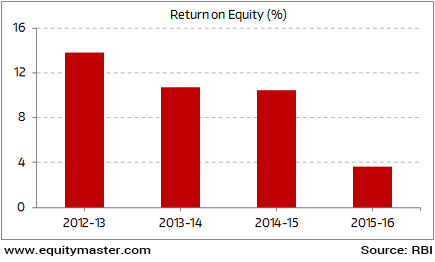India's Third Giant Leap
This Could be One of the Biggest Opportunities for Investors
- Home
- Todays Market
- Indian Stock Market News January 2, 2017
Indian Indices Trade in the Red; Banking Stocks Witness Selling Pressure Mon, 2 Jan 11:30 am
After opening the day on a weak note, the Indian share markets have continued to trade in the red. Sectoral indices are trading on a mixed note with stocks from the banking sector and FMCG sector witnessing maximum selling pressure. Stocks in the realty sector are trading in the green.
The BSE Sensex is trading down 142 points (down 0.5%) and the NSE Nifty is trading down 41 points (down 0.5%). Meanwhile, the BSE Mid Cap index is trading up by 0.1%, while the BSE Small Cap index is trading up 0.5%. The rupee is trading at 68.03 to the US$.
On the news from global markets, recent data showed that Japan's core consumer prices slumped for the ninth straight month. The core consumer price index slipped 0.4% in November from a year earlier. Household spending too slumped in November. Data showed that housing spending fell 1.5% in November from a year earlier in price-adjusted real terms. This was against a median market forecast of a 0.2% increase. The data suggested that slow wage growth was keeping consumers in Japan from shopping.
This suggests that Japan still lacks enough momentum to jump-start inflation and reach the Bank of Japan's (BOJ) ambitious 2% target. The BOJ has repeatedly been forced to push back the timing for achieving its inflation target.
The bank is still pursuing the above efforts. It has maintained its negative 0.1% interest rate imposed on banks for some excess reserves. It has also kept the 10-year Japanese government bond (JGB) yield target at around zero and its annual increases in JGB holdings at 80 trillion yen.
However, all these efforts by the BOJ, including three years of aggressive money printing, have failed to spur inflation. If there's one place on this planet that epitomises all the wrong kinds of growth, it's Japan. Too much money printing...too much debt...too much government intervention...too much stock market manipulation...
So why bother about Japan? Because that's where the rest of the world's central banks appear to be heading. We don't know about the timing. But the end is going to be ugly. If you want to know what's really happening in the world of man and money, you can claim your free copy of Bill Bonner's latest book, Hormegeddon.
Also, the above developments by the BOJ are in continuation with the easy money policies that central banks are adopting around the world. With the changes at central banks in 2016, it seems that the end of easy money is near.
On the news from the banking space, the government has allowed 12 public sector banks (PSBs) to raise nearly Rs 30 billion via preferential shares. This amount is over and above the Rs 229 billion capital support committed to them in July last year and is aimed at strengthening capital base of PSBs.
Being on the topic of PSBs, the Reserve Bank of India (RBI), in its Financial Stability Report (FSR) for 2016, has raised the red flag on quality of loans in public sector banks. The latest non-performing asset (NPA) numbers show significant levels of stress. This can mean as a negative development for the shareholders in PSU banks. As one of our recent editions of The 5 Minute WrapUp states...
- 'As a shareholder in banks, if the NPA number does not worry you, here is something that should. The sector's average Return on Equity (RoE) has crashed from 10.4% in FY15 to just 3.6% in FY16. All thanks to the profits written off on account of NPA provisions. 70% of them in the books of public sector banks. More importantly, the drag in the ROE is likely to persist in FY17 too. So shareholders of public sector banks have a reason to re-think the margin of safety required to invest in such stocks.'
Continuous Deterioration in Banks' Return on Equity

Lastly, Prime Minister Narendra Modi, in his speech over the weekend, has announced the launch of 'BHIM: Bharat Interface for Money'. This is another option for users to make or receive payments. The initiative is another step towards a less cash economy. It is built by the National Payments Corporation of India (NPCI).
An Aadhaar-based payments system would be added to the app in the next two weeks. The prime minister in his speech stated that the app does not even require internet connection to work. The intention is to get increased adoption of digital means of transactions in the economy. Though, the implementation will be crucial to the success of this initiative.
For information on how to pick stocks that have the potential to deliver big returns, download our special report now!
Read the latest Market Commentary


Equitymaster requests your view! Post a comment on "Indian Indices Trade in the Red; Banking Stocks Witness Selling Pressure". Click here!
Comments are moderated by Equitymaster, in accordance with the Terms of Use, and may not appear
on this article until they have been reviewed and deemed appropriate for posting.
In the meantime, you may want to share this article with your friends!